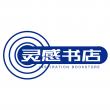
拓扑绝缘体
正版保障 假一赔十 可开发票
¥ 34.75 6.0折 ¥ 58 全新
仅1件
广东广州
认证卖家担保交易快速发货售后保障
作者沈顺清[著]
出版社世界图书出版公司北京公司
ISBN9787519219543
出版时间2017-01
装帧平装
开本其他
定价58元
货号8917612
上书时间2024-09-11
- 最新上架
商品详情
- 品相描述:全新
- 商品描述
-
目录
1 Introduction
1.1 From the Hall Effect to Quantum Spin Hall Effect
1.2 Topological Insulators as Generalization of Quantum Spin Hall Effect
1.3 Topological Phases in Superconductors and Superfluids
1.4 Dirac Equation and Topological Insulators
1.5 Summary: The Confirmed Family Members
1.6 Further Reading
References
2 Starting from the Dirac Equation
2.1 Dirac Equation
2.2 Solutions of Bound States
2.2.1 Jackiw—Rebbi Solution in One Dimension
2.2.2 Two Dimensions
2.2.3 Three and Higher Dimensions
2.3 Why Not the Dirac Equation
2.4 Quadratic Correction to the Dirac Equation
2.5 Bound State Solutions of the Modified Dirac Equation
2.5.1 One Dimension: End States
2.5.2 Two Dimensions: Helical Edge States
2.5.3 Three Dimensions: Surface States
2.5.4 Generalization to Higher—Dimensional Topological Insulators
2.6 Summary
2.7 Further Reading
References
3 Minimal Lattice Model for Topological Insulator
3.1 Tight Binding Approximation
3.2 From Continuous to Lattice Model
3.3 One—Dimensional Lattice Model
3.4 Two—Dimensional Lattice Model
3.4.1 Integer Quantum Hall Effect
3.4.2 Quantum Spin Hall Effect
3.5 Three—Dimensional Lattice Model
3.6 Parity at the Time Reversal Invariant Momenta
3.6.1 One—Dimensional Lattice Model
3.6.2 Two—Dimensional Lattice Model
3.6.3 Three—Dimensional Lattice Model
3.7 Summary
References
4 Topological Invariants
4.1 Bloch Theorem and Band Theory
4.2 Berry Phase
4.3 Quantum Hall Conductance and Chern Number
4.4 Electric Polarization in a Cyclic Adiabatic Evolution
4.5 Thouless Charge Pump
4.6 Fu—Kane Spin Pump
4.7 Integer Quantum Hall Effect: Laughlin Argument
4.8 Time Reversal Symmetry and the Z2 Index
4.9 Generalization to Two and Three Dimensions
4.10 Phase Diagram of Modified Dirac Equation
4.11 Further Reading
References
5 Topological Phases in One Dimension
5.1 Su—Schrieffer—Heeger Model for Polyacetylene
5.2 Ferromagnet with Spin—Orbit Coupling
5.3 p—Wave Pairing Superconductor
5.4 Ising Model in a Transverse Field
5.5 One—Dimensional Maxwells Equations in Media
5.6 Summary
References
6 Quantum Spin Hall Effect
6.1 Two—Dimensional Dirac Model and the Chern Number
6.2 From Haldane Model to Kane—Mele Model
6.2.1 Haldane Model
6.2.2 Kane—Mele Model
6.3 Transport of Edge States
6.3.1 Landauer—Buttiker Formalism
6.3.2 Transport of Edge States
6.4 Stability of Edge States
6.5 Realization of Quantum Spin Hall Effect in HgTe/CdTe Quantum Well
6.5.1 Band Structure of HgTe/CdTe Quantum Well
6.5.2 Exact Solution of Edge States
6.5.3 Experimental Measurement
6.6 Quantum Hall Effect and Quantum Spin Hall Effect:A Case Study
6.7 Coherent Oscillation Due to the Edge States
6.8 Further Reading
References
7 Three—Dimensional Topological Insulators
7.1 Family Members of Three—Dimensional Topological Insulators
7.1.1 Weak Topological Insulators: PbxSn1—xTe
7.1.2 Strong Topological Insulators: Bi1—xSbx
7.1.3 Topological Insulators with a Single Dirac Cone: Bi2Se3 and Bi2Te3
7.1.4 Strained HgTe
7.2 Electronic Model for Bi2Se3
7.3 Effective Model for Surface States
7.4 Physical Properties of Topological Insulators
7.4.1 Absence of Backscattering
7.4.2 Weak Antilocalization
7.4.3 Shubnikov—de Haas Oscillation
7.5 Surface Quantum Hall Effect
7.6 Surface States in a Strong Magnetic Field
7.7 Topological Insulator Thin Film
7.7.1 Effective Model for Thin Film
7.7.2 Structural Inversion Asymmetry
7.7.3 Experimental Data of ARPES
7.8 HgTe Thin Film
7.9 Further Reading
References
8 Impurities and Defects in Topological Insulators
8.1 One Dimension
8.2 Integral Equation for Bound State Energies
8.2.18—potential
8.3 Bound States in Two Dimensions
8.4 Topological Defects
8.4.1 Magnetic Flux and Zero—Energy Mode
8.4.2 Wormhole Effect
8.4.3 Witten Effect
8.5 Disorder Effect to Transport
8.6 Further Reading
References
9 Topological Superconductors and Superfluids
9.1 Complex (p+ip)—Wave Superconductor of Spinless or Spin—Polarized Fermions
9.2 Spin—Triplet Pairing Superfluidity: 3He—A and 3He—B Phases
9.2.13He: Normal Liquid Phase
9.2.23He—B Phase
9.2.33He—A Phase: Equal Spin Pairing
9.3 Spin—Triplet Superconductor: Sr2RuO4
9.4 Superconductivity in Doped Topological Insulators
9.5 Further Reading
References
10 Majorana Fermions in Topological Insulators
10.1 What Is the Majorana Fermion?
10.2 Majorana Fermions in p—Wave Superconductors
10.2.1 Zero—Energy Mode Around a Quantum Vortex
10.2.2 Majorana Fermions in Kitaevs Toy Model
10.2.3 Quasi—One—Dimensional Superconductor
10.3 Majorana Fermions in Topological Insulators
10.4 Detection of Majorana Fermions
10.5 Sau—Lutchyn—Tewari—Das Sarma Model for
Topological Superconductor
10.6 Non—Abelian Statistics and Topological Quantum Computing
10.7 Further Reading
References
11 Topological Anderson Insulator
11.1 Band Structure and Edge States
11.2 Quantized Anomalous Hall Effect
11.3 Topological Anderson Insulator
11.4 Effective Medium Theory for Topological Anderson Insulator
11.5 Band Gap or Mobility Gap
11.6 Summary
11.7 Further Reading
References
12 Summary: Symmetry and Topological Classification
12.1 Ten Symmetry Classes for Noninteracting Fermion Systems
12.2 Physical Systems and the Symmetry Classes
12.2.1 Standard (Wigner—Dyson) Classes
12.2.2 Chiral Classes
12.2.3 Bogoliubov—de Gennes (BdG) Classes
12.3 Characterization in the Bulk
12.4 Five Types in Each Dimension
12.5 Conclusion
12.6 Further Reading
References
A Derivation of Two Formulae
A.1 Quantization of the Hall Conductance
A.2 A Simple Formula for the Hall Conductance
B Time Reversal Symmetry
B.1 Classical Cases
B.2 Time Reversal Operator
B.3 Time Reversal for a Spin—1/2 System
Index
精彩内容
本书基于修正狄拉克方程,全面描述了一维到三维拓扑绝缘体。书中公式推导简明易懂,给出了一系列边界
— 没有更多了 —












以下为对购买帮助不大的评价